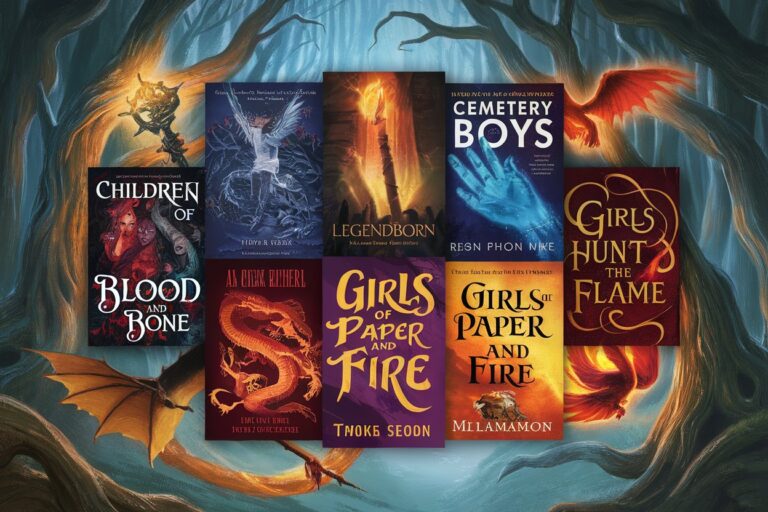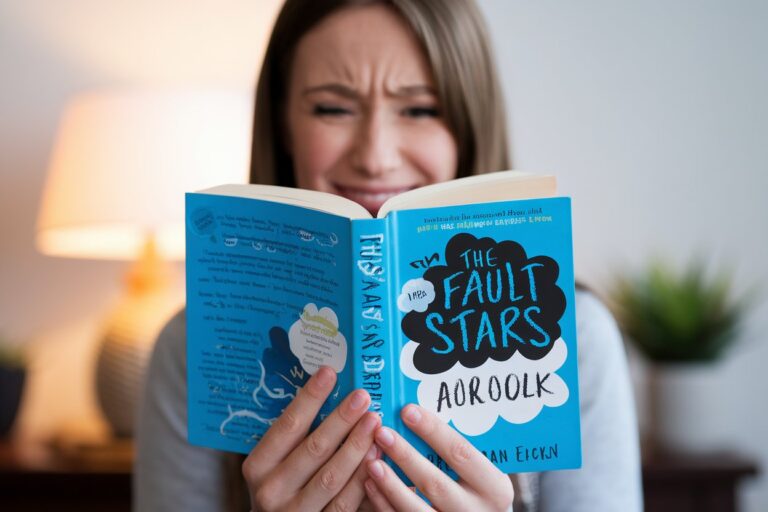Discover the best young adult fiction of 2025! From fantasy and romance to mental health and dystopian worlds, find your next favorite YA read in our comprehensive guide.
Table of Contents
- Introduction
- What Is Young Adult Fiction?
- Top Young Adult Fantasy Books of 2025
- Most Popular Young Adult Romance Novels This Year
- Table: Comparing Popular YA Genres in 2025
- Young Adult Books Addressing Mental Health
- LGBTQ+ Representation in Young Adult Literature
- Best Young Adult Dystopian Fiction of 2025
- Table: Young Adult Book Recommendations by Age Group
- Young Adult Historical Fiction Highlights
- Coming-of-Age Stories for Teens and Adults
- How YA Fiction Differs from Adult Fiction
- Frequently Asked Questions About Young Adult Fiction
- What age group is young adult fiction intended for?
- Can adults enjoy young adult fiction?
- What are the most popular genres in YA fiction?
- What are the common themes in YA books?
- What makes a good YA protagonist?
- Why is romance so common in YA fiction?
- What is the difference between middle-grade and young adult fiction?
- Conclusion: Why Young Adult Fiction Matters
Introduction
Do you remember the last time a book kept you up until 3 AM, flashlight in hand, desperate to know what happens next? That’s the magic of young adult fiction – stories so compelling that sleep becomes optional. As a lifelong bookworm who’s devoured everything from dystopian wastelands to magical schools, I’ve spent countless nights in this delicious predicament.
Young adult fiction (or YA, as the cool kids call it) continues to evolve and expand in exciting ways. Whether you’re a teen looking for your next obsession, a TikTokker hunting for #BookTok recommendations, or an adult who appreciates the emotional honesty of YA storytelling, 2025’s offerings have something special for everyone.
What makes this year’s YA fiction lineup particularly exciting is the incredible diversity of voices, perspectives, and worlds waiting to be discovered. From fantasy realms that will make you question reality to contemporary stories that mirror your own experiences with startling accuracy, the young adult section has never been more vibrant.
In this guide, I’ll take you through the absolute best YA releases of the year, breaking down what makes them worth your precious reading time and helping you find your next literary obsession. So grab your bookmark, settle into your coziest reading spot, and let’s dive into the most captivating young adult fiction of 2025!
What Is Young Adult Fiction?
Before we jump into this year’s stellar lineup, let’s make sure we’re all on the same page about what exactly makes a book “young adult.”
Young adult fiction refers to books written primarily for readers between 12 and 18 years old, though many adults enjoy them too (more on that later!). These stories typically feature teenage protagonists navigating the challenges of adolescence while dealing with external conflicts that range from school drama to saving the world.
What sets YA apart isn’t just the age of its characters but its approach to storytelling. YA fiction often explores themes of identity, belonging, first love, and finding one’s place in the world with a directness and emotional intensity that’s particularly resonant for teen readers.
As author John Green put it perfectly, “Young adult fiction is for readers who are too old for kids’ books but not quite ready for adult literature.” It’s that beautiful, messy middle ground where characters make mistakes, fall in love, discover their strengths, and begin to understand who they truly are.

Top Young Adult Fantasy Books of 2025
Fantasy continues to dominate the YA landscape, offering readers magical escapes from reality while exploring deeply human emotions and challenges. Here are the standout fantasy releases that have readers and critics buzzing this year:
1. “Ember Crown” by Talia Nightshade
When debut author Talia Nightshade burst onto the scene with “Ember Crown,” #BookTok went absolutely wild. This West African-inspired fantasy follows Zara, a girl who discovers she’s the last in a lineage of fire wielders in a world where elemental magic has been outlawed.
What makes this book special is how Nightshade weaves complex political intrigue with Zara’s coming-of-age journey. The magic system is incredibly detailed yet accessible, and the romantic subplot between Zara and Kaden, a water wielder who should be her enemy, has sparked countless TikTok edits.
Why you’ll love it: If you enjoyed Children of Blood and Bone by Tomi Adeyemi but want something with even more romantic tension and political complexity, this book should top your TBR pile.
2. “The Midnight Court” by Fiona Chen
As the first book in Chen’s “Fae Chronicles” trilogy, “The Midnight Court” combines Celtic mythology with contemporary teenage life in a way that feels both fresh and familiar. Protagonist Lily discovers her fae heritage on her 16th birthday when she’s suddenly able to see the hidden fae world overlapping with her suburban hometown.
The worldbuilding here is spectacular – Chen creates a fae society with distinct courts, hierarchies, and politics that pull Lily deeper into dangerous territory as she tries to understand her heritage while protecting her human family and friends.
Why you’ll love it: It’s Perfect for fans of “A Court of Thorns and Roses” who are looking for a more contemporary setting and a protagonist who maintains her connections to the human world.
3. “Spellbound Academy: First Year” by Jackson Rivera
School-based magic stories never seem to lose their appeal, and Rivera’s fresh take on the genre proves why. Set in a magical academy hidden in the Rocky Mountains, this novel follows Oliver, a late-blooming wizard who enters the academy with minimal magical ability but a knack for magical theory.
What sets this book apart is its focus on friendship rather than romance, with Oliver and his diverse group of friends tackling magical mysteries and school politics. The magic system is based on emotional resonance rather than incantations is particularly innovative.
Why you’ll love it: If you grew up with Harry Potter but crave more diverse representation and contemporary sensibilities, Spellbound Academy delivers nostalgia with a modern twist.
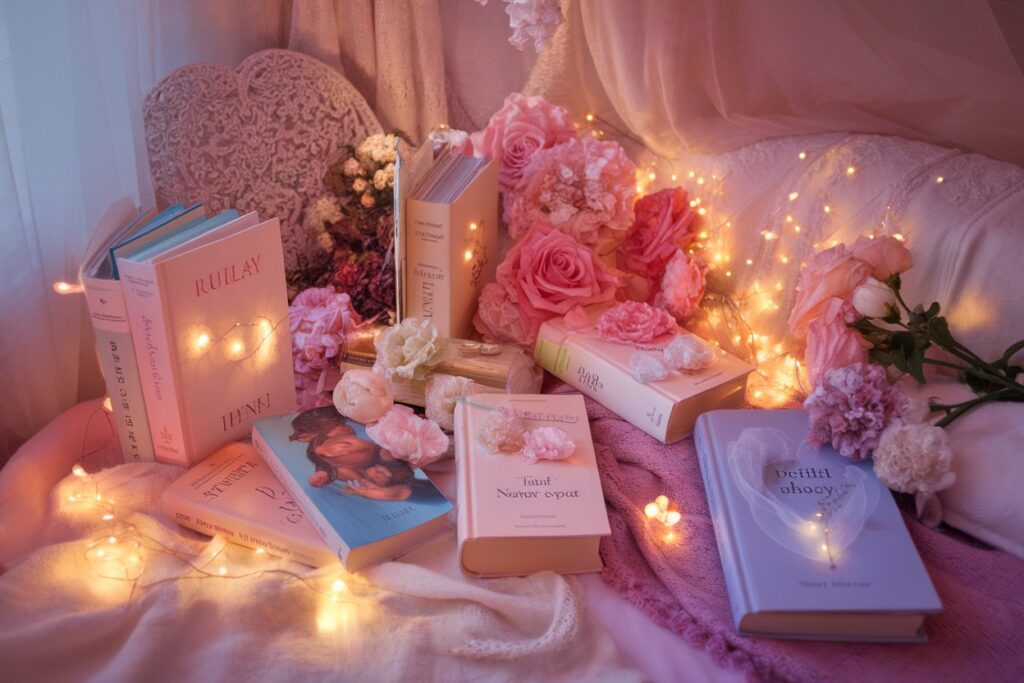
Most Popular Young Adult Romance Novels This Year
Romance remains a cornerstone of YA fiction, with stories that capture the intensity and awkwardness of first love. This year’s standout romantic reads feature diverse couples, unique settings, and emotional depth that elevates them beyond simple love stories:
1. “Meet Me at Midnight” by Jasmine Lee
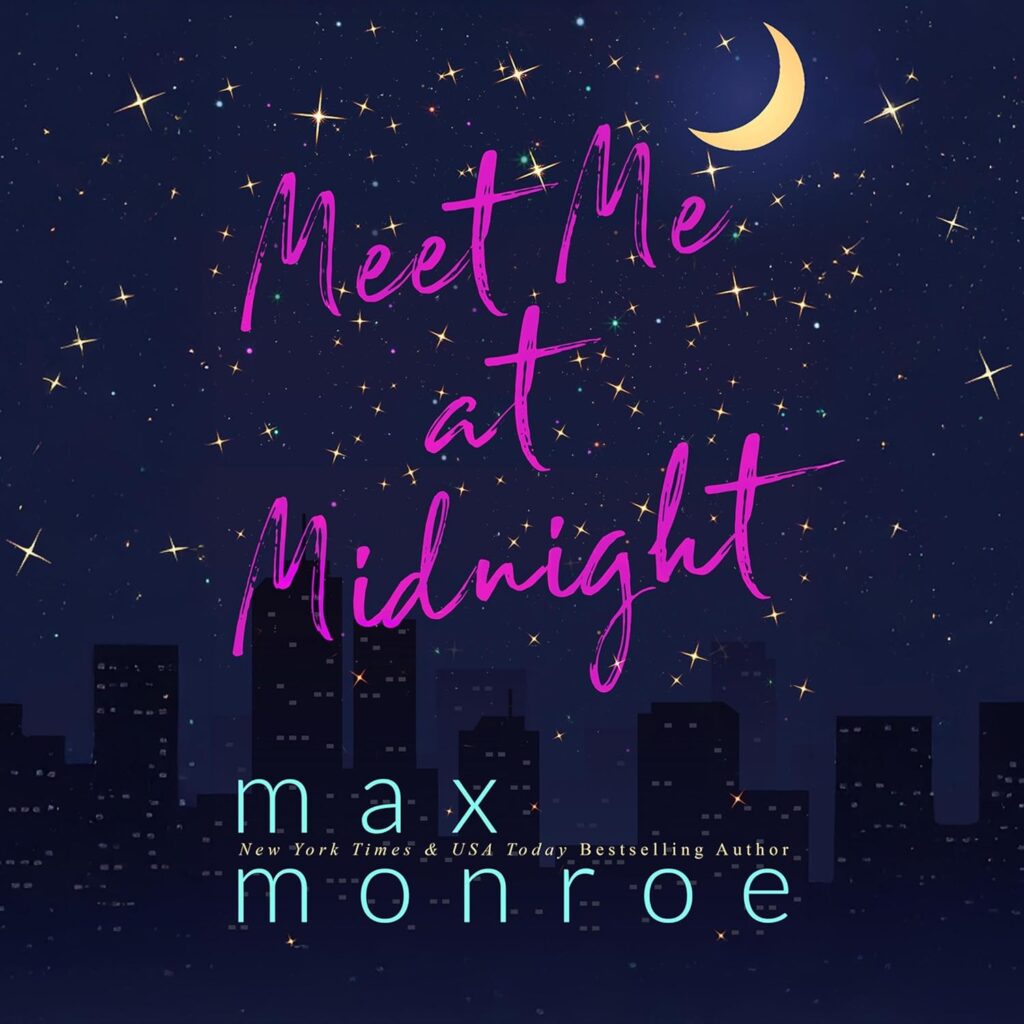
This contemporary romance follows Korean-American Ellie and her longtime neighbor/nemesis, Derek as they navigate their final summer before college. Their families have shared a lake house every summer since they were kids, and they’ve spent years playing increasingly elaborate pranks on each other.
When one prank goes too far and gets them both banned from their favorite lake activities, they form a reluctant alliance to earn back their privileges. The enemies-to-lovers progression is perfectly paced, with banter sharp enough to cut and moments tender enough to melt even the most cynical heart.
Why you’ll love it: The perfect summer read with depth – addressing family expectations, college anxiety, and cultural identity alongside the swoony romance.
2. Playlist for the Apocalypse by Marcus Rivera
Set during an extended citywide blackout, this unique romance follows music lovers Sasha and Rio as they navigate a New York City without power, guided only by their shared love of obscure indie bands and Rio’s battery-powered record player.
What begins as two strangers connecting during an emergency evolves into a deep exploration of vulnerability, trust, and how music helps us express the inexpressible. Each chapter is named after a song, creating a perfect soundtrack for their developing relationship.
Why you’ll love it: For music lovers, this novel’s exploration of how songs become the soundtrack to our most important moments offers an added layer of connection to the love story.
3. “Love & Other Unlikely Probabilities” by Aisha Patel
This mathematics-infused romance follows Riya, a statistics prodigy who approaches her love life with the same analytical precision she applies to equations. After calculating that her crush on her best friend’s brother has a statistically insignificant chance of success, she creates a dating algorithm to find her perfect match.
What she doesn’t account for is Declan, the new student who challenges her formulas and introduces the variable of unpredictability into her carefully calculated life. Their relationship develops through tutoring sessions and debate club rivalries, creating a perfect blend of intellectual and emotional tension.
Why you’ll love it: If you enjoy STEM-focused female protagonists and romance that engages the mind as much as the heart, Riya’s story delivers both with humor and authenticity.
Table: Comparing Popular YA Genres in 2025
| Genre | Key Themes | Popular Setting Types | Notable 2025 Releases |
|---|---|---|---|
| Fantasy | Identity, power, destiny, chosen ones | Magical schools, alternative worlds, medieval-inspired kingdoms | “Ember Crown,” “The Midnight Court,” “Spellbound Academy” |
| Romance | First love, vulnerability, self-discovery | High schools, summer settings, special events/circumstances | “Meet Me at Midnight,” “Playlist for the Apocalypse,” “Love & Other Unlikely Probabilities” |
| Dystopian | Resistance, societal critique, survival | Post-apocalyptic worlds, authoritarian regimes, environmental disasters | “Above the Flood,” “The Memory Collectors,” “Citizen Zero” |
| Contemporary | Mental health, family dynamics, friendship | High schools, urban settings, summer breaks | “The Year of Maybe,” “Four Minutes to Midnight,” “The Space Between Us” |
| Historical | Identity across time, uncovering forgotten histories | WWII, 1960s-1990s, ancient civilizations with fantasy elements | “Letters from Yesterday,” “The Berlin Chronicles,” “Pharaoh’s Daughter” |

Young Adult Books Addressing Mental Health
One of the most important developments in recent YA fiction is the thoughtful exploration of mental health issues. This year’s standout titles approach these complex topics with sensitivity, authenticity, and hope:
1. “The Year of Maybe” by Eleanor Hayes
Hayes’s powerful novel follows 16-year-old Maya through her first year of recovery from severe depression and a suicide attempt. Rather than focusing solely on the crisis, the story explores the messy, non-linear process of healing and rebuilding.
What makes this book exceptional is its balanced portrayal of therapy, medication, family support, and Maya’s own internal journey toward self-compassion. The novel doesn’t shy away from difficult moments but avoids falling into hopelessness or offering unrealistically neat solutions.
Why you’ll love it: For readers who have experienced mental health challenges, Maya’s journey offers recognition and hope; for others, it provides profound insight and empathy.
2. “Four Minutes to Midnight” by Trevor Santos
This innovative novel unfolds over the course of a single night as insomniac and anxiety-sufferer Julian wanders his neighborhood in the predawn hours, unexpectedly crossing paths with classmate Makayla, who’s dealing with her own hidden struggles.
Through alternating perspectives that reveal their internal and external dialogues, Santos creates a deeply relatable exploration of how anxiety affects perception and how connection can occur in unexpected moments of honesty.
Why you’ll love it: The real-time structure creates an intimate reading experience, while the night setting provides a perfect metaphor for moving through darkness toward dawn.
3. The Space Between Us by Zoe Washington
Washington’s thoughtful novel explores grief, friendship, and family secrets through protagonist Devon, who discovers video messages his best friend Ari recorded before dying by suicide. Each message leads Devon to a different location important to their friendship and reveals pieces of Ari’s struggle he never shared when alive.
The novel avoids sensationalizing suicide while honestly addressing the complex emotions of survivors. As Devon follows Ari’s digital breadcrumbs, he also discovers his own need for help and begins to open up to the people still in his life.
Why you’ll love it: This novel balances the heaviness of its subject with genuine moments of connection, hope, and even humor, reflecting the complexity of real life.

LGBTQ+ Representation in Young Adult Literature
Young adult fiction continues to lead the way in publishing diverse LGBTQ+ stories across all genres. This year’s standout titles offer authentic representation while telling compelling stories that appeal to readers of all identities:
1. “Greenwild” by Marina Chen
This eco-fantasy follows nonbinary protagonist Ash, who discovers they can communicate with plants – an ability that makes them the key to saving a hidden forest dimension threatened by human development.
Chen skillfully weaves Ash’s gender identity into the story naturally, creating a character whose nonbinary identity is important but not their defining characteristic. The novel’s exploration of connection to nature, community, and finding one’s voice creates a rich backdrop for Ash’s personal and magical journey.
Why you’ll love it: The lush descriptions of plant magic and environmental themes add depth to this coming-of-age adventure, while Ash’s journey toward self-acceptance resonates universally.
2. “The Boy in the Red Cape” by Ezra Malik
Set in a small conservative town, Malik’s debut novel follows aspiring costume designer Tariq as he creates increasingly elaborate superhero costumes to wear in secret. When he accidentally saves a younger student while in disguise, his anonymous alter ego becomes a local legend.
As Tariq navigates family expectations, his Muslim faith, and his identity as a gay teen, the metaphor of the superhero costume becomes a powerful exploration of authenticity and courage. His budding romance with fellow theater student Leo adds sweetness to this thoughtful coming-out story.
Why you’ll love it: Tariq’s journey balances serious themes with genuinely funny moments and a heartwarming romance that avoids both tragedy and unrealistic perfection.
3. “Queens of Noise” by Diane Rivera
This historical fiction novel set in 1970s Los Angeles follows a diverse group of teenage girls forming an all-female rock band. Protagonist Sophie discovers her bisexuality as she falls for the band’s charismatic drummer, Viv, against the backdrop of the era’s evolving music scene and social changes.
Rivera’s meticulous research brings the period to life, from clothing and slang to the very real dangers and discrimination LGBTQ+ people faced. The novel doesn’t shy away from historical realities but maintains a core of joy in self-discovery and artistic expression.
Why you’ll love it: The rock ‘n’ roll setting provides a vibrant backdrop for this authentic exploration of finding one’s identity and community in a less accepting time.
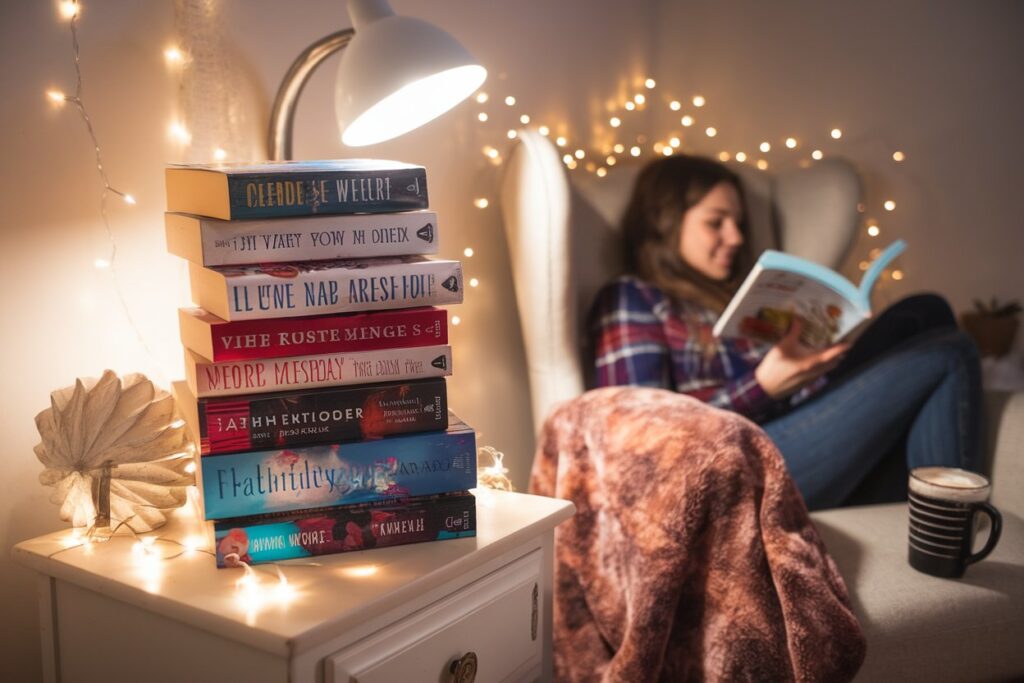
Best Young Adult Dystopian Fiction of 2025
Despite predictions of its decline, dystopian fiction continues to resonate with young readers grappling with real-world anxieties about climate change, technology, and social justice. This year’s standout titles offer fresh takes on the genre:
1. “Above the Flood” by Noah Chen
Set in a near-future America transformed by a catastrophic sea level rise, Chen’s novel follows 17-year-old Mina as she navigates life in a floating community constructed from salvaged materials off the coast of what was once Florida.
When her engineer father disappears after discovering corruption in the water filtration systems, Mina must use her own technical skills to find him and expose the truth. The novel brilliantly balances an action-driven plot with a thoughtful exploration of community resilience and climate justice.
Why you’ll love it: If you enjoy dystopian settings that feel uncomfortably plausible, with a protagonist whose technical knowledge is as important as her courage.
2. “The Memory Collectors” by Eliza Thorn
In Thorn’s unsettling future society, privacy has been eliminated through mandatory memory downloads, ostensibly to prevent crime but increasingly used for social control. Seventeen-year-old Iris discovers she’s immune to the technology and becomes recruited by an underground resistance movement.
What sets this book apart is its nuanced exploration of memory, privacy, and how shared experiences shape both personal and collective identity. As Iris becomes a repository for others’ secret memories, she must navigate the ethical implications of her unique ability.
Why you’ll love it: This thoughtful thriller asks profound questions about technology and privacy while delivering the tension and resistance narrative that dystopian fans crave.
3. “Citizen Zero” by James Kwan
Kwan’s debut novel is set in a hyper-stratified society where social media influence directly determines citizenship levels and access to resources. The protagonist, Lin, has maintained a perfect Citizen Ten status until a controversial post causes her rating to plummet overnight.
As a newly designated “Citizen Zero” with no rights or resources, Lin must navigate the underground economy of the unranked while uncovering who targeted her and why. Her journey reveals the true cost of a society built on performative perfection and constant evaluation.
Why you’ll love it: This sharp social satire takes current social media anxieties to their logical extreme while delivering an engaging thriller with surprising twists.
Table: Young Adult Book Recommendations by Age Group
| Age Group | Recommended Titles | Features to Look For |
|---|---|---|
| 12-14 (Younger YA) | “Spellbound Academy: First Year,” “Greenwild,” “The Boy in the Red Cape“ | Less graphic content, age-appropriate protagonists, focus on friendship and self-discovery |
| 15-17 (Core YA) | “Ember Crown,” “Meet Me at Midnight,” “The Year of Maybe,” “Queens of Noise” | More complex themes, romance as significant subplot, deeper exploration of identity |
| 18+ (Upper YA/New Adult) | “Playlist for the Apocalypse,” “The Memory Collectors,” “Citizen Zero” | More mature content, protagonists facing transition to adulthood, complex moral questions |
| Adult YA Readers | “Above the Flood,” “Four Minutes to Midnight,” “Love & Other Unlikely Probabilities” | More complex themes, romance as a significant subplot, deeper exploration of identity |

Young Adult Historical Fiction Highlights
Historical fiction offers young adult readers a window into different times while exploring timeless themes of identity, justice, and coming of age. This year’s standout historical YA novels transport readers to various eras with authenticity and emotional resonance:
1. “Letters from Yesterday” by Simon Park
Set in 1943, Park’s novel follows Japanese-American teenager Kiko as her family is forced into an internment camp. Through letters exchanged with her best friend, who has moved to the East Coast, Kiko documents camp conditions while maintaining her passion for photography despite limited resources.
Park’s meticulous research brings this shameful period of American history to life through specific, vivid details and complex characters. The novel doesn’t shy away from historical injustice while also portraying the resilience, creativity, and community that flourished even in unjust circumstances.
Why you’ll love it: This powerful exploration of a frequently overlooked historical period offers important perspective on themes of justice, prejudice, and maintaining one’s identity in dehumanizing circumstances.
2. The Berlin Chronicles by Amara Schmidt
Schmidt’s novel follows American teenager Ellie who moves to Berlin in 1989 when her professor mother gets a research position. Arriving just months before the fall of the Berlin Wall, Ellie becomes friends with Stefan, an East German teen who risks everything to challenge the system.
Through alternating perspectives, the novel explores both sides of the divided city, creating a nuanced portrait of this pivotal historical moment. Schmidt skillfully balances political history with personal stories, showing how large events affect individual lives.
Why you’ll love it: For readers interested in European history, Cold War politics, and stories about everyday resistance, this novel offers both educational value and emotional impact.
3. “Pharaoh’s Daughter” by Nadia Ibrahim
This historical fantasy blend reimagines ancient Egypt through the eyes of fictional princess Nefertari, who discovers her secret connection to magic and a prophecy that threatens the established order.
Ibrahim’s background in Egyptology shines through in the detailed portrayal of daily life, religious practices, and political structures of the New Kingdom period. The fantasy elements are seamlessly woven into a historical context, creating a world that feels both authentic and magical.
Why you’ll love it: It’s Perfect for readers who enjoy historical settings enhanced with fantasy elements and strong female protagonists challenging restrictive gender roles.

Coming-of-Age Stories for Teens and Adults
The coming-of-age narrative remains at the heart of young adult fiction, exploring universal experiences of growing up and finding one’s place in the world. This year’s standout titles offer fresh perspectives on this timeless theme:
1. “The Center of Everything” by Maya Patel
When her grandmother’s dementia rapidly worsens, 17-year-old Devi becomes the primary caretaker while attempting to maintain her perfect academic record and conceal the situation from authorities who might separate them.
Patel’s portrayal of a teen balancing adult responsibilities with her own developmental needs offers a poignant exploration of family loyalty, grief for someone still present, and the complexity of care relationships. As Devi reconnects with her grandmother through cooking traditional Indian recipes, she also discovers her own passion and path.
Why you’ll love it: This emotionally rich story handles complex family dynamics with nuance and authenticity, avoiding both melodrama and easy solutions.
2. “The Half of Ourselves” by Thomas Rivera
Rivera’s novel follows identical twins Leo and Mateo, who have always shared everything – until Leo realizes he’s gay and Mateo develops a serious girlfriend. As their identities diverge for the first time, they must navigate their changing relationship and individual journeys.
The novel thoughtfully explores how identity development affects close relationships, particularly the unique dynamic between twins. Rivera handles both characters’ journeys with equal care, showing how growing up sometimes means growing apart in necessary ways.
Why you’ll love it: This nuanced exploration of sibling relationships, identity, and the challenge of individuating will resonate with anyone who has experienced the growing pains of close relationships.
3. “All That We Could Be” by Elena Chen
Chen’s lyrical novel follows aspiring poet Mei through her senior year as she grapples with college decisions, her parents’ divorce, and unexpected feelings for her longtime friend Jackson. Each chapter opens with a poem that reflects Mei’s emotional journey.
What makes this novel stand out is its thoughtful exploration of potential and choices – how the paths we don’t take shape us as much as those we do. As Mei weighs practical career options against her artistic passions, she learns to define success on her own terms.
Why you’ll love it: For readers facing big life transitions, Mei’s journey offers reassurance that uncertainty is normal and that growing up isn’t about having all the answers.
How YA Fiction Differs from Adult Fiction
Young adult fiction has evolved into a sophisticated category with its own conventions and strengths. Here’s what sets YA apart from adult fiction:
1. Immediacy and Emotional Intensity
YA fiction typically has a more immediate narrative style that pulls readers directly into the protagonist’s experiences. Emotions tend to be portrayed with greater intensity – not because teens feel more strongly than adults, but because many emotions are being experienced for the first time without the context of previous similar experiences.
This emotional immediacy creates the compelling readability that draws many adult readers to the category. As bestselling author Leigh Bardugo once noted, “In YA, the doors are flung wide open, and the emotional content isn’t blunted or veiled with literary tricks.”
2. Focus on Identity and Firsts
While adult fiction often deals with characters who already have established identities navigating changes to that identity, YA fiction frequently explores the initial formation of identity. Protagonists are asking fundamental questions: Who am I? What do I believe? Where do I belong?
Similarly, YA often centers around significant firsts – first love, first major loss, first serious responsibility, first major ethical dilemma. These universal experiences create connection points for readers of all ages.
3. Pacing and Structure
YA fiction typically features tighter pacing, with less extensive exposition and more emphasis on character development through action and dialogue. While there are certainly exceptions, YA generally moves more quickly than literary adult fiction.
This doesn’t mean YA is simplistic – many YA novels tackle complex themes and use sophisticated literary techniques. The difference is more about approach than depth.
4. Hope and Agency
While YA fiction doesn’t shy away from difficult topics, it typically includes elements of hope and emphasizes the protagonist’s agency. Even in the darkest dystopian settings, YA protagonists work to change their circumstances rather than merely survive them.
This emphasis on hope and action reflects the developmental stage of the intended audience, who are themselves beginning to exercise greater agency in their own lives.
Frequently Asked Questions About Young Adult Fiction
What age group is young adult fiction intended for?
Young adult fiction is primarily intended for readers aged 12-18, though the category is often further divided into younger YA (12-14) and older YA (15-18). That said, a significant portion of YA readers are actually adults! According to recent publishing statistics, over 55% of YA books are purchased by readers over 18.
Can adults enjoy young adult fiction?
Absolutely! Adults make up a huge percentage of the YA reading audience, and for good reason. YA fiction often features compelling storytelling, emotional authenticity, and exploration of universal human experiences that resonate regardless of the reader’s age. The idea that adults should only read “adult” books is an arbitrary distinction that many readers happily ignore.
What are the most popular genres in YA fiction?
Fantasy continues to dominate the YA market, with contemporary realistic fiction (including romance) as a close second. Dystopian fiction remains popular despite predictions of its decline, while historical fiction and mystery/thriller categories have seen growth in recent years. Science fiction, horror, and graphic novels also maintain significant readerships within the YA category.
What are the common themes in YA books?
While themes vary widely across the category, some particularly common themes in YA fiction include:
- Identity formation and self-discovery
- Belonging and finding one’s community
- Challenging authority and questioning societal norms
- First love and romantic relationships
- Friendship and loyalty
- Family dynamics (both biological and chosen families)
- Mental health and personal resilience
- Social justice and activism
What makes a good YA protagonist?
Compelling YA protagonists typically have several key qualities:
- Authenticity and distinctive voice
- Agency and active participation in their own story
- Growth potential and willingness to change
- Relatable flaws and insecurities
- Passion or strong motivation
- Complex relationships with others
The most memorable protagonists aren’t perfect – they make mistakes, have blind spots, and sometimes act on impulse rather than wisdom. What makes them compelling is their authenticity and their capacity for growth.
Why is romance so common in YA fiction?
Romance is prevalent in YA fiction because it reflects the reality of the adolescent experience – many teens are experiencing romantic feelings and relationships for the first time. These first romantic experiences often coincide with broader identity development, making them particularly significant.
Additionally, romance provides an excellent vehicle for exploring vulnerability, trust, communication, and personal boundaries – all important developmental themes. Even in YA novels where romance isn’t the central plot, romantic subplots often provide character development and emotional depth.
What is the difference between middle-grade and young adult fiction?
Middle-grade fiction (typically aimed at readers 8-12) differs from YA in several key ways:
- Content: MG typically avoids explicit content, graphic violence, and romance beyond crushes or first kisses
- Themes: MG often focuses on friendship, family, and understanding one’s place in the immediate world, while YA explores broader societal issues and more complex interpersonal relationships
- Perspective: MG protagonists are typically 10-13 and looking outward at the world, while YA protagonists are often 15-18 and looking both outward and inward with greater self-awareness
- Length and complexity: MG books are generally shorter with somewhat simpler sentence structures and plot lines
The transition between MG and YA reflects the developmental shift from childhood to adolescence, with its increased independence and self-reflection.
Conclusion: Why Young Adult Fiction Matters
Young adult fiction occupies a unique and vital place in the literary landscape. These books arrive at a formative time when readers are developing their identities, values, and understanding of the world. A powerful YA novel can become a touchstone, offering validation, perspective, and, perhaps most importantly, the profound realization that one is not alone in their experiences and feelings.
For teen readers, YA fiction provides mirrors to see themselves reflected and windows into different lives and perspectives. For adult readers, these stories offer a reconnection with formative emotions and experiences, often with a clarity that adult fiction sometimes obscures with complexity.
The best young adult fiction doesn’t talk down to its audience or offer simplistic answers to life’s big questions. Instead, it acknowledges the intensity and importance of adolescent experiences while providing stories that entertain, challenge, comfort, and inspire.
As this year’s outstanding offerings demonstrate, YA fiction continues to evolve, embracing diverse voices and perspectives while maintaining the emotional authenticity and compelling storytelling that define the category. Whatever your age, there’s never been a better time to explore the rich world of young adult fiction.
What YA books are you excited to read this year? Share your recommendations in the comments below, and happy reading!

